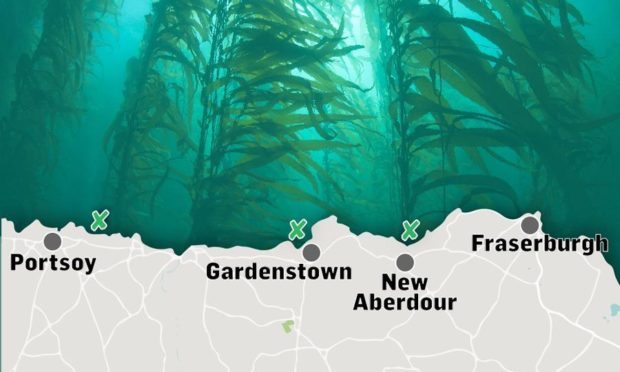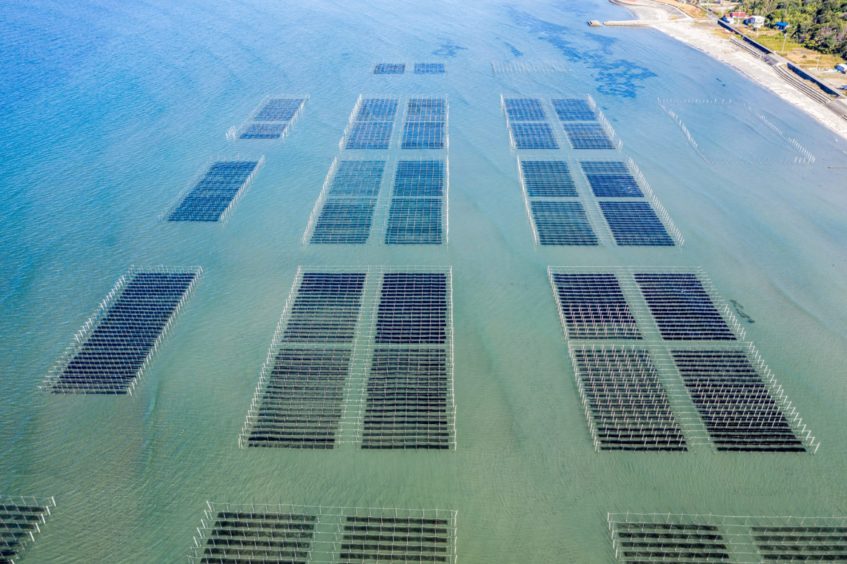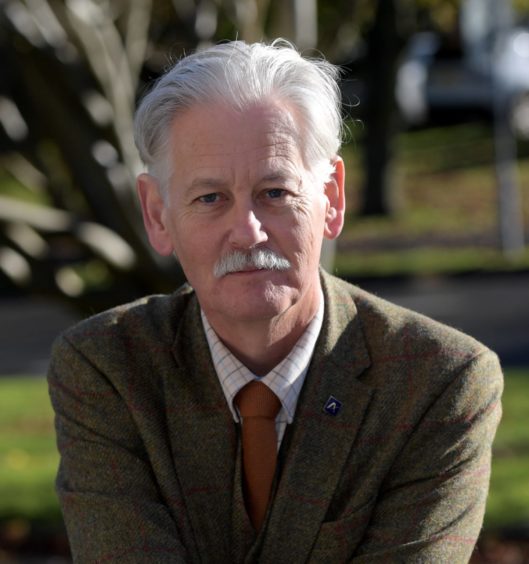Plans for Aberdeenshire seaweed farming could present a “tremendous opportunity for coastal communities” and create new job opportunities for those in the fishing industry, it is hoped.
The cultivation and harvesting of seaweed is a worldwide industry that has more than tripled in production since 2018.
In Scotland, the practice has traditionally been carried out in west coast communities and on islands, and for the most part involves the harvesting of wild plants.
However, new manmade seaweed farms could soon crop up off the north-east coastline as part of a new project by Aberdeenshire Council.
Where could they be located?
The local authority commissioned Northern Light Consulting to determine the feasibility of introducing the industry to Aberdeenshire, and over the past three months the company has identified three potential sites off the Banff and Buchan Coast in a study.
Click on our interactive map to find out more:
Aberdour Bay, north of New Aberdour, Gamrie Bay at Gardenstown, and Boyne Bay near Portsoy have all been earmarked as potential sites for cultivating seaweed.
Each location has been appraised for both positive and negative aspects.
Northern Light has recommended that a “small-scale, grant-funded trial” be carried out, as after months of “investigation, consultation and analysis we have concluded that there is a viable business opportunity for seaweed cultivation on the Aberdeenshire coast”.
How do they work, and what are the benefits?
As well as providing jobs, seaweed farming can result in environmental benefits for the planet and marine wildlife.
It can provide suitable habitats for many species, and absorbs carbon dioxide.
The proposed farm designs for Aberdeenshire would consist of moorings and long lines, supported by floatation buoys, for the seaweed to grow from.
Each year, they would be seeded between October and November, harvested for human-grade products in May and June, and harvested for non-food grade products in August.
As well as the obvious use in meals, seaweed can also be used as a component of cosmetics, be used as a biofuel, or be made into environmentally-friendly feed for livestock.
And Northern Light and Aberdeenshire Council both hope the industry could provide new employment for people in the north-east, particularly those who work in the fishing sector.
‘A tremendous opportunity’
Councillor Peter Argyle, deputy leader of Aberdeenshire Council, said: “This work has shown that there is real potential for seaweed farming on Aberdeenshire’s north coast and a tremendous opportunity for coastal communities to diversify into a new sector.
“Seaweed production is growing across the world and is being used for an extensive range of products from bio packaging, animal feed, fertiliser to use in pharmaceuticals. It also absorbs significant amounts of CO2 and thus can contribute to net zero.
“We have a food supply chain and intermediary processors in Aberdeenshire which make the prospects of this sector more viable than other parts of Scotland, together with an inshore fishing community with the skills and ability to develop commercial seaweed farms.
“This project fits closely with our regeneration strategy and our ambitions to help coastal communities develop and grow so I am delighted to see that results of this study are so positive.”
Potential issues to weed out
Earlier this month, Northern Light held an online presentation for any interested parties looking to find out more about the proposals.
During the event, concerns were raised by a handful of individuals and organisations about the potential impacts of the farms.
One north-east trawler skipper said two of the three earmarked areas would be a “non-starter”, due to high vessel movements in the area from local squid trawlers.
And the Northern Lighthouse Board (NLB), which is responsible for marine navigation aids around Scotland, raised concerns about the limited aquaculture on the east coast due to “higher exposure of extreme conditions” over the “more sheltered west coast”.
Fingal McKiernan, coastal inspector with the NLB, said: “Our principal concern is with the safety of mariners and the environment.
“Any new development within the marine environment requires a safety of navigation consent under respective Marine Licence conditions and as such, the NLB would have to be consulted at the licensing stage.
“Every development is assessed on a case-by-case basis.”
In response, Northern Light stressed the three locations identified in the feasibility study are potential sites only, and the design for the Aberdeenshire farms would have “heavier duty gear”.
Northern Light also said it consulted inshore creel fishermen in Portknockie and Rosehearty, as well as a squid fisherman in Macduff, and that the company “fully accept that the potential locations identified require further consultation before any proposal is taken further”.
‘Real excitement in the business community’
Christine Webster, regeneration and towns manager at Aberdeenshire Council, said the authority is “intrigued” about how the seaweed farming proposals “could benefit businesses and jobs in Banff and Buchan”.
She continued: “The Banff and Macduff Vision and Action Plans were formed to accelerate the development of the towns, and this opportunity is one that could really add value to our food and drink sector whilst also contributing to reducing carbon emissions in so many ways.
“There is real excitement in the business community about the potential.”


